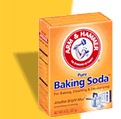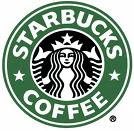Intrigued? It is only a week until pitchers and catchers report to spring training boys and girls. This is great news, as it means winter will soon be over and there are more warm summer nights watching the Red Sox with my sons around the corner. It also has me thinking about investing. I know, stay with me though, it will all make sense soon enough.
When a batter has two strikes on them, it is called a pitchers count. The reason? The batter must swing at any pitch close to the strike zone for fear if they let it go, the umpire will call it a strike and they will be out. Sit down, do not pass go and do not collect your $200. Pitchers know this and throw pitches that are just out of the strike zone knowing the batters will swing. The reason batters in the major leagues have lower batting averages when they have two strikes on them? They are not usually swinging at good pitches. Even if that pitch is the perfect hitters pitch, a fast ball, if it is not in the right location, batting averages fall. The ultimate example of this is in the Baseball Hall of Fame in Cooperstown, NY, next to a statue of Boston Red Sox great Ted Williams, the greatest hitter in the history of the sport. Yes Yankee fans, Ted Williams was the greatest. Had he not spent two tours in the military (5 years) serving his country while in his prime, Barry Bonds would be chasing his HR and walk records today. It should be noted here Williams never once regretted this decision and spent his time in Korea as a fighter pilot, almost being shot down several times. In baseball, he posted a .344 lifetime average, a .488 on base percentage and is the last player to hit .400 for a season. But I digress, sorry, the juices are starting to flow. The display (pictured to the right) is from the Hall of Fame. It illu strates the average Williams believed he would hit for if he swung at pitches in a certain location. The better the location, the better his results. Now, all the pitches are strikes but depending on their location, the outcome for the greatest hitter of all time was dramatically different.
strates the average Williams believed he would hit for if he swung at pitches in a certain location. The better the location, the better his results. Now, all the pitches are strikes but depending on their location, the outcome for the greatest hitter of all time was dramatically different.
Last summer I started watching Church & Dwight and no, they aren’t cousins of Brooks & Dunn or even Montgomery Gentry and I am relatively sure they cannot carry a tune. CHD is the maker of Arm & Hammer Baking Soda, Trojan condoms, Nair hair removal, First Response Pregnancy test and a host of other consumer products you can find here.
The stock had been bouncing around from $35 to $37 a share for a while and given its p ast track record, I was interested to say the least. Earnings had grown from 76 cents a share in 2001 to $1.84 in 2005 (140%), the dividend had grown 26% in the same time frame (not great but still growing), cash on hand grew from $50 million to $125 million (this is good when you consider annual profits in 2005 of $637 million) and total debt only grew 56% to $735 million (this too is okay as it is only 1/3 the growth in profits and was used for the acquisitions that helped grow them). But, their products are boring (I know there is a Trojan and First Response joke there but I am going to leave it alone) and how much growth is there in baking soda? Besides, they were trading at about 21 times earnings, expensive and not a true valueplay . I said to myself “If I buy it and it drops I have broken my cardinal rule by buying a stock that is not really undervalued”. I decide to wait.
ast track record, I was interested to say the least. Earnings had grown from 76 cents a share in 2001 to $1.84 in 2005 (140%), the dividend had grown 26% in the same time frame (not great but still growing), cash on hand grew from $50 million to $125 million (this is good when you consider annual profits in 2005 of $637 million) and total debt only grew 56% to $735 million (this too is okay as it is only 1/3 the growth in profits and was used for the acquisitions that helped grow them). But, their products are boring (I know there is a Trojan and First Response joke there but I am going to leave it alone) and how much growth is there in baking soda? Besides, they were trading at about 21 times earnings, expensive and not a true valueplay . I said to myself “If I buy it and it drops I have broken my cardinal rule by buying a stock that is not really undervalued”. I decide to wait.
Then in August, they announce they were raising earnings guidance for 2006 2 cents to about $1.95 or 11% higher than 2005. I want to jump but the stock reacts immediately and begins a march from $37 to $39. Strike One. “But”, I say to myself again “they only raised the guidance by 2 cents a share, it is too much of a run for 2 pennies so I will wait for it to come back down and consider it again”. What happens next? In November they raise guidance again by 5 cents this time and the stock begins its accent to $42. Strike Two. “Still trading at a price to earnings in the low 20’s and growing at 12%, a bit too pricey” I remind myself. Again, how much growth is there in baking soda?
December 15 rolls around and they announce they are entering India next year and the stock begins its climb from $42 to $44. Now I am really pissed at myself because I have waited and watched almost 25% in profits not materialize in only 6 months. Strike three, but I am still at the plate batting.
January comes and CHD shares begin to falter. After hitting an all time high on Jan, 31st they drift lower over the next 5 days. “Here we go” I think, “let’s give up a few dollars and I will pick some up”. Of course CHD reports earnings on the 6th and they grew profits 47% in 4th quarter and they guide higher (again) for 2007. Strike four and I am still at the plate. The stock now sits at $46.42 and still trades at 22 times 2006 earnings.
CHD is a story about the power of brands and being in lines of business that are consistent earners. No matter what the economy does, people will clean, have sex, get pregnant, brush their teeth and hopefully get rid of unpleasant body hair (not necessarily in that order I assume). CHD is in all these business with industry leading products. They have been able to leverage the image of quality in the Arm & Hammer brand into laundry soap, toothpaste and cleaning supplies with great success. When you think of condoms you think of? Trojan. When you think of the results of not using them you think of? First Response. The strength of these brands has allowed them to successfully pass on price increases and because of this CHD is projecting 13% to 14% growth for next year. In short, this is a great company that is running very smoothly and yes by leveraging the Arm & Hammer brand there is growth in baking soda. As for their other segments, sex and pregnancy are certainties in life and world population growth will lead to continued strength for CHD.
Back to baseball, CHD is a high fastball, the perfect hitters pitch but its location, like its price is too high and not a good one to swing at. Our chances and the level of success we would expect at this level, like Ted Williams’ would be diminished. So I wait.
For the past 5 years the performance at CHD has been nothing short of outstanding. They haven’t missed earnings estimates and when the topic does come up they are typically guiding higher. This has lead investors to have total confidence in their them and they have been rewarded, with shares up about 170% in that period. This confidence is illustrated by investors being willing to pay a higher premium for shares (price earnings ratio). At its current ratio (22), CHD trades at almost twice next year’s earnings growth rate. Compare this to our current portfolio picks like Dow, MO, SHW that trade at premium’s that barely exceed their current growth rates and picks like ADM, SHLD and OC that trade below their current growth rates and you’ll see why I think it is expensive.
Why does this matter? The high multiple investors are paying on CHD shares has them priced for management’s flawless execution. Should they falter, shares will be punished. You have heard it before, everybody makes mistakes, nobody is perfect, well the same can be said of the management of a business. For 5 years CHD has been, eventually they will falter. India may be that event. It may be more expensive to break into the market than they believe, there may not be the market for condoms and pregnancy tests they hope there is. Any of these would cause earnings to stumble and at this price level, the shares would fall fast as doubts now enter the picture for the first time in 5 years.
Now you may ask, what about Friday’s post on the Gap? If you bought it now you would be paying 21 times this years earnings and they are actually growing at a negative rate! Hypocrisy? No. Let me explain. Gap is broken. CHD is not. Gap, if they take my prescribed fix can grow earnings next year 12% just through share buybacks and if they close the unprofitable locations another 6% to 7% earnings growth from the savings is easily attainable. You then have 18% to 20% earnings growth at Gap next year. That is the reason I have advised we not buy Gap shares now until we hear what the new CEO has to say. Should they not buy back shares and close unprofitable stores then the shares are too expensive at their current levels and I will not be a buyer. At CHD there is nothing obvious to do to improve performance. They are leveraging brands, raising prices and entering new markets. No problems.
Just like I have been advising against buying shares of Google at its current levels, so too must I advise against CHD. Unlike Google I will add it to our watch list because it is in markets and businesses that give me a high degree of predictability when it come to earnings, Google is not. Also, its brand strength does give it a durable competitive advantage in several of its businesses. I just need as little less risk to the downside on it before I swing (I want this fastball lower in the strike zone). In order to consider shares in CHD I need to be able to get them around $40, that has me paying about 17 times 2007 earnings for a great company growing at about 14%, I can live with that ($40 is about 15% less than its current price).
If the price comes down to my $40 I will swing. If not, I will just keep letting pitches go buy. The beauty of investing over baseball is I cannot be called out, no matter how many strikes I watch go by. I only have a bad result if I swing at a bad pitch.
In memorium:
“Ted’s (Williams) passing signals a sad day, not only for baseball fans, but for every American. He was a cultural icon, a larger-than-life personality. He was great enough to become a Hall of Fame player. He was caring enough to be the first Hall of Famer to call for the inclusion of Negro Leagues stars in Cooperstown. He was brave enough to serve our country as a Marine in not one but two global conflicts. Ted Williams is a hero for all generations.” – Dale Petroskey (President of the Baseball Hall of Fame)
ps. Baking soda. Did you know that it can replace almost all of your household cleaners? The beauty of it is that it is cheaper, works better than most of them and if your children get into it, they will not get poisoned, go blind or suffer burns. For all its household uses please click here











